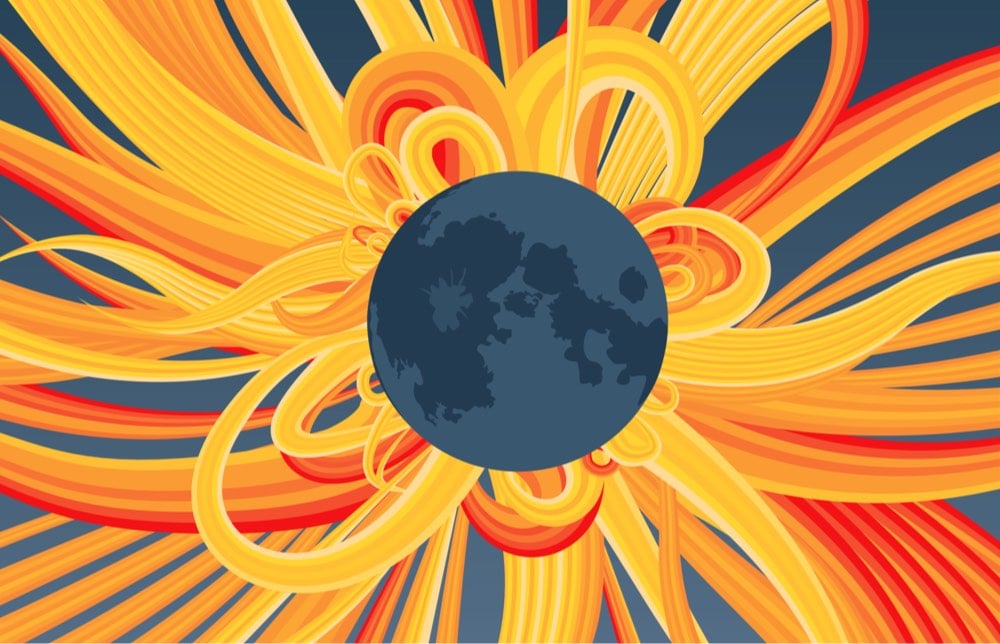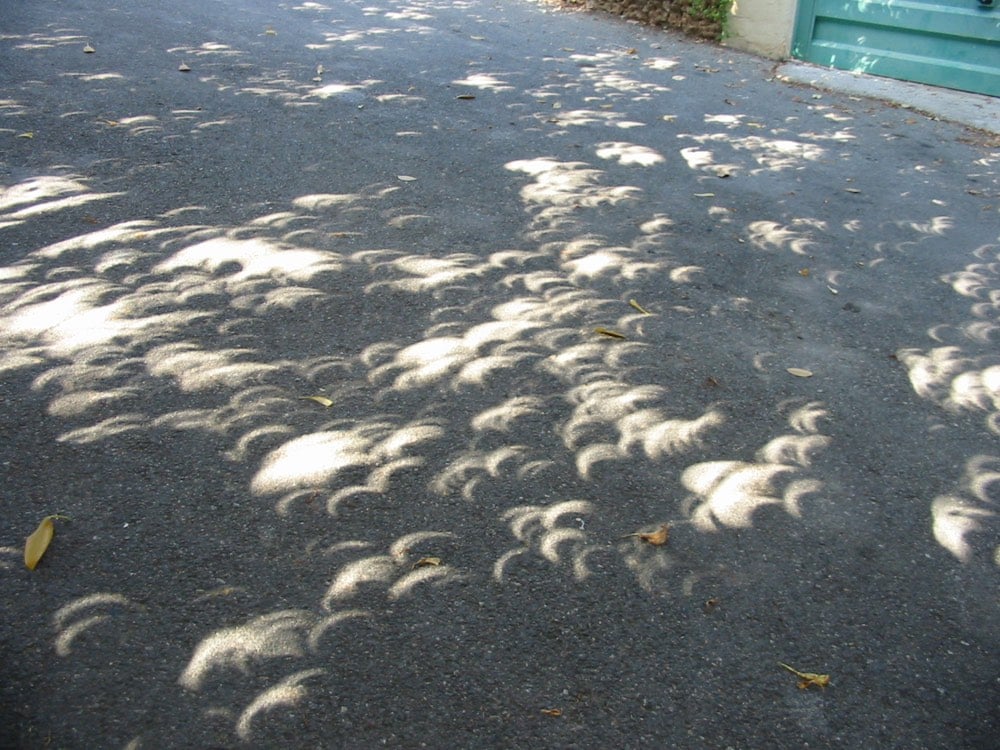How to safely enjoy the 2017 solar eclipse, a buyer’s guide for normal people

Important update: Since I published this guide a month ago, NASA and the AAS have updated their recommendation on buying solar safety glasses due to reports of counterfeit eclipse glasses. They no longer recommend looking for the ISO rating alone but only buying from a recommended manufacturer. If you have purchased glasses or are going to purchase glasses, read this page carefully before using them, paying particular attention to this bit:
Unfortunately, you can’t check whether a filter meets the ISO standard yourself — doing so requires a specialized and expensive piece of laboratory equipment called a spectrophotometer that shines intense UV, visible, and IR light through the filter and measures how much gets through at each wavelength. Solar filter manufacturers send their products to specialized labs that are accredited to perform the tests necessary to verify compliance with the ISO 12312-2 safety specifications. Once they have the paperwork that documents their products as ISO-compliant, they can legitimately use the ISO logo on their products and packaging.
Even more unfortunately, unscrupulous vendors can grab the ISO logo off the internet and put it on their products and packaging even if their eclipse glasses or viewers haven’t been properly tested. This means that just seeing the ISO logo or a label claiming ISO 12312-2 certification isn’t good enough. You need to know that the product comes from a reputable manufacturer or one of their authorized dealers.
Amazon recently sent out emails to the buyers of the plastic-framed glasses I bought and linked to here (“habibee 4-Pack Black Plastic Eclipse Glasses CE & ISO Certified 2017 Safe Solar Eclipses Viewing Shades Block Sun Ultraviolet UV Lights Goggles”), saying that they have “not received confirmation from the supplier of your order that they sourced the item from a recommended manufacturer” and, to their credit, have automatically issued refunds to those buyers. They also appear to have removed any products from their site that aren’t sourced from a recommended manufacturer. This doesn’t necessarily mean the glasses are faulty…it just means the solar filter paper used for the lenses can’t be sourced. Again, read this page carefully before deciding to use any glasses you may have purchased. I tested a pair this morning, looking at bright light bulbs and they seem appropriately dark, but as noted by the AAS, who knows about the UV and IR filtering? I’m throwing mine out.
The cardboard-framed glasses I linked to (while currently sold out) are manufactured by American Paper Optics, which is on the AAS’s list of reputable vendors. Also on the list is the manufacturer of the solar filter sheets, Thousand Oaks Optical. The two cardboard camera lens covers I linked to have been deleted from Amazon, a sign that their sourcing cannot be verified. I’ve updated the links and text below to only include links to products on the list of reputable vendors. Most are sold out at this point anyway, so…
I wish I’d had these new NASA and AAS recommendations a month ago…I obviously would have followed them closely in making buying choices & recommendations. That some unscrupulous manufacturers are using people’s enthusiasm for science and viewing the eclipse to sell potentially harmful products makes me angry and sick to my stomach. Luckily Amazon is doing the right thing here with refunds and safety notices. And thanks to NASA and the AAS for their guidance…again please read this before using your eclipse glasses, even ones you may have gotten free from your public library or through other organizations. /end update
On August 21, 2017 across the entire United States, the Moon will move in front of the Sun, partially blocking it from our view. For those on the path of totality, the Moon will entirely block out the Sun for more than 2 minutes. I’ve been looking forward to seeing a total solar eclipse since I was a little kid, so I’ve been doing a lot of research on what to buy to enjoy the eclipse safely. Here’s what I’ve come up with.
I’ve oriented this guide toward the enthusiastic beginner, someone who’s excited about experiencing the wonder of the eclipse with their friends & family but isn’t interested in expensive specialty gear or photography (like me!). And, again, since you will be able to see this eclipse from everywhere in North America to some degree, this guide applies to anyone in the US/Canada/Mexico.
In planning for eclipse viewing, please check out NASA’s safety notes for more information. Make sure that whatever you buy, it’s properly rated for naked eye solar viewing. Looking directly at the Sun without a proper filter can cause permanent damage, particularly through binoculars, a camera lens, or a telescope.
Note: If you’re going to get eclipse supplies, now is the time. Some of this stuff will probably be very difficult to find (or very expensive) as we approach August 21 — for instance, shipping estimates on Amazon for some of the glasses are mid-August already.
Solar eclipse glasses are essential. Right up until the Sun goes completely behind the Moon (if you’re on the path of totality), you will want to look at the crescent-shaped Sun and you’ll need certified safety glasses to do so. Regular sunglasses will not work! Do not even. There are several options…find some in stock that ship soon. Note: If you have young kids, splurge for the plastic framed glasses (if you can find them…most are sold out now)…my testing indicates the cardboard ones don’t stay on smaller heads as well.
Make a pinhole viewer. A pinhole viewer will let you see the shape of the eclipsed Sun without having to look directly at it. This Exploratorium guide should get you started. All you need in terms of supplies you probably have lying around at home: aluminum foil, paper, cardboard, etc. I suspect Kelli Anderson’s This Book is a Camera ($27) might also work if you play with the exposure times?
Apply good sunscreen. You’ve got your eye protection down, now for the rest of yourself. The eclipse is happening in the middle of the day in much of the country, in what you hope will be complete sunshine, so bring some sunscreen. The Sweethome recommends this SPF 70 Coppertone for $9. Wear a cap. Stay in the shade. Bonus for shading yourself under trees: the gaps between the leaves will form little pinhole lenses and you’ll see really cool patterns:

A nice pair of binoculars. If you’re in the path of totality, you might want a pair of binoculars to look more closely at the totally eclipsed Sun (after checking that it’s safe!!). I’m guessing you don’t want to buy a pair of specialty astronomy binoculars, so the best binoculars are probably ones you already own. If you don’t already have a pair, The Wirecutter recommends the Midas 8 x 42 binoculars by Athlon Optics ($290) with the Carson VP 8x42mm ($144) as a budget pick. (For solar filter options, see below.)
A solar filter for your camera. If you have a camera, they might make a solar filter for whatever lens you want to use. Hydrogen alpha filters will allow you to see the most detail — “crazy prominences and what-not” in the words of a photography pal of mine — but are also pretty expensive. You can buy solar filter sheets ($29) to make your own lens coverings for your camera, binoculars, or telescope. Quality will likely not be fantastic, but you’ll get something. Safety warning: place any filters in front of lenses or it can burn a hole in the filter (and then into your eye); i.e. don’t use binoculars in front of safety glasses!!
Note for budding solar photographers: Shooting the eclipse will be challenging. First there’s too much light and you’ll need a filter. Then when totality occurs, you’ll be in the dark needing a tripod and a fast lens. Plan accordingly…or leave it all at home and look at the thousands of photos taken by pro photographers after the fact.
Ok, that’s it. Have a good eclipse and stay safe!
Update: I removed a reference to the plastic-rimmed safety glasses I ordered because the image has changed on this item since I ordered them and published this guide…it’s now a wire-rimmed pair of glasses. I would recommend getting something else instead, just to be safe. (thx, @kahnnn)
Update: NASA has been alerted that some of the paper glasses being sold are not safe for viewing the eclipse. When buying, look for the ISO icon (referencing 12312-2) and for glasses made by these recommended manufacturers: American Paper Optics, Rainbow Symphony, Thousand Oaks Optical, or TSE 17. (via @ebellm)
Update: The Wirecutter has released their guide to The Best Solar Eclipse Glasses and Filters and they recommend the Celestron EclipSmart 2x Power Viewers (2-pack for $10), which provide not only certified eye protection but a nice 2X zoom.





Stay Connected